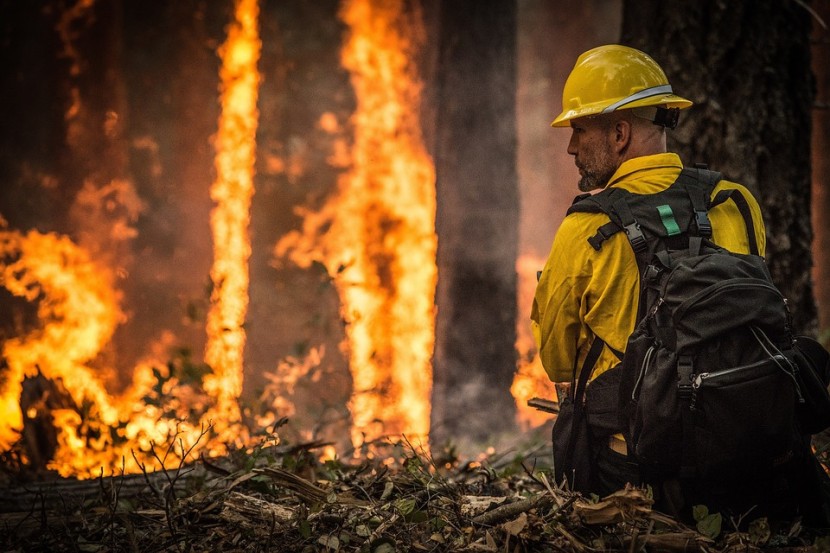
Ukrainian firemen labored into Sunday late evening attempting to put out two forest blazes in the area around the Chernobyl nuclear power station, which was evacuated because of radioactive contamination after the 1986 explosion at the plant.
Ukraine's emergency service said one of the flames, covering about five hectares, had been localized. On the other hand, the other fire was around 20 hectares. Earlier Sunday, the head of the state ecological inspection service, Yehor Firsov, said the flames had spread to around 100 hectares. The difference in sizes could not promptly be settled.
Firsov said radiation levels at the fire were significantly higher than normal. In any case, the emergency service said radiation levels in the capital of Kyiv, about 100 kilometers south, were within standards.
The flames were inside the 2,600-square-kilometer (1,000-square-mile) Chernobyl Exclusion Zone established after the 1986 accident at the plant that sent a haze of radioactive fallout over much of Europe. The zone is largely uninhabited, although around 200 people have stayed in spite of requests to leave.
The Chernobyl Accident 1986
The April 1986 disaster at the Chernobyl nuclear power plant in Ukraine was the result of an imperfect Soviet reactor design combined with serious mistakes made by the plant operators. It was an immediate outcome of Cold War separation and the subsequent absence of any safety culture.
The accident annihilated the Chernobyl 4 reactor, killing 30 operators and firefighters within three months and several further deaths later. One individual was killed quickly and a second died in hospital not long after as a result of wounds received. Another person is reported to have died at the time from a coronary thrombosis. Acute radiation syndrome was initially diagnosed in 237 people on-site and associated with the clean-up and it was later affirmed in 134 cases.
Of these, 28 individuals died as a result of acute radiation syndrome within half a month of the accident. Nineteen more workers consequently died between 1987 and 2004, however, their deaths cannot necessarily be credited to radiation exposure. Nobody off-site experienced from acute radiation effects although a significant, however questionable, portion of the thyroid cancers analyzed since the accident in patients who were children at the time are likely to be due to intake of radioactive iodine fallout.
Furthermore, enormous areas of Belarus, Ukraine, Russia, and beyond were contaminated in changing degrees.
Lasting aftermath of the Chernobyl disaster
The Chernobyl disaster was the only accident in the history of commercial nuclear power where radiation-related fatalities happened. The plan of the reactor is unique and in that respect, the accident is thus of little relevance to the rest of the nuclear industry outside the then Eastern Bloc. In any case, it prompted significant changes in security culture and in industry cooperation, especially among East and West before the end of the Soviet Union.
The former President Gorbachev said that the Chernobyl accident was an increasingly significant factor in the fall of the Soviet Union than Perestroika, his program of liberal change reactor is remarkable and in that respect, the accident is thus of little importance to the rest of the nuclear industry outside the then Eastern Bloc.
In any case, it prompted significant changes in security culture and in industry cooperation, especially among East and West before the end of the Soviet Union. Former President Gorbachev said that the Chernobyl accident was an increasingly significant factor of the Soviet Union than Perestroika his program of liberal reform.
© 2026 HNGN, All rights reserved. Do not reproduce without permission.








